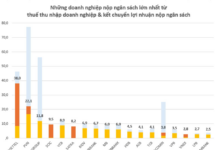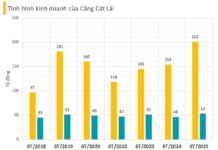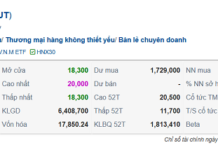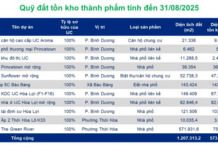Along with investment and consumption, exports are one of the 3 pillars of the economy. Among them, textile and footwear are Vietnam’s two key export industries. Figures from the General Statistics Office show that textile and footwear are two of the 7 exported items with a value of over $10 billion in 2023, with $33.2 billion and $20.3 billion, respectively.
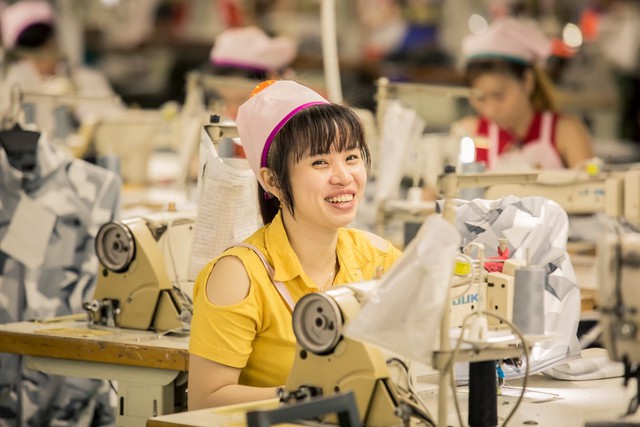
The Vietnamese textile industry does not use child labor. Photo: CRBP Project.
According to the statistics of the General Statistics Office, Vietnam is also known as the world’s third largest exporter of textiles, after China and Bangladesh. In 2023, the Vietnamese textile industry also set a record by “conquering” 104 markets and territories. According to the statistics of the Vietnam Textile and Apparel Association (Vitas), there are about 7,500 textile and garment enterprises nationwide, 80% of which are medium and small enterprises, directly employing over 3 million workers.
For the footwear industry, according to the General Department of Customs, in 2023, for the 26th consecutive year (since 1998), total footwear exports exceeded $1 billion and ranked high among the products with a high export turnover. Vietnam is currently ranked second in the world in terms of footwear exports, accounting for an estimated 10% of the world’s production.
Notably, since the end of 2023 and the beginning of 2024, the number of export orders for the two key industries has shown signs of a rebound, with an average increase of around 20-25%. The remarkable results of these two industries are due to the strict standards applied by the markets, even in difficult markets such as the United States and the EU, regarding sustainable development, ESG (environmental, social, and governance) standards, human rights, etc.
Textile and footwear export businesses pay more attention to child rights
In a press sharing session, Ms. Nguyen Hoang Thuy, Vietnam Trade Counselor to Sweden, concurrently Iceland, Norway, Latvia, Denmark, said that for Vietnamese textile products to be exported to Europe, they must meet all the standards set by European countries, notably advanced standards on child rights.
Specifically, “North European eco-labeled textile factories must comply with the conventions of the International Labor Organization (ILO), which ban forced labor, child labor, and discrimination, and also set requirements for reasonable wages and working hours. The eco-labeling bodies in Northern Europe also inspect all production facilities worldwide,” Ms. Thuy said.
All of these regulations aim to increase the quality and create favorable conditions for the circular economy in the textile industry. And if placed in the context of the economy moving towards sustainable values today, the application of these standards not only applies to export businesses, but also to the entire supply chain that produces export products.
Notably, in the report “Survey on the Implementation of Child Rights by Businesses of Small and Medium Enterprises in Vietnam” conducted by the VCCI with support from UNICEF (2021), small and medium enterprises in Vietnam with export products to international markets have more motivations to promote child rights. Specifically, textile and footwear enterprises pay more attention to child rights issues.
This is because businesses in this industry have to meet the requirements of importers, including strict requirements on child rights and business principles in their operations.
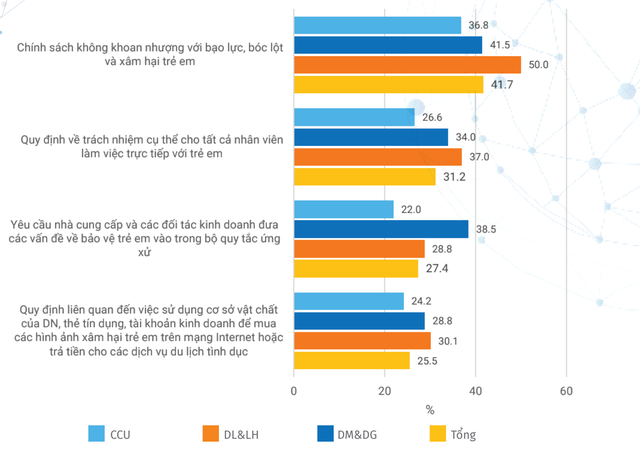
The proportion of small and medium enterprises in Vietnam applying policies/practices to protect children in their business operations. Photo: CRBP Project
According to the aforementioned report, as for the sector, up to 23.5% of small and medium enterprises in the textile and garment and footwear industries are required to apply child rights to their business activities, compared to 8.3% of tourism and travel businesses and 5.2% of supply chain businesses. The reason is the strict export requirements of customers in the textile and footwear sectors. However, textile and garment and footwear businesses are least trained (only 2%), whereas tourism and travel businesses have the highest training rate (8.6%) in child rights.
Moreover, the report also indicates that up to 50% of small and medium enterprises in the textile and garment and footwear industries are more concerned about the policies on penalties and handling acts of violence, exploitation, and abuse of children than tourism and travel businesses (41.5%) and supply chain businesses (36.8%).
Another notable point mentioned in the report is that textile and garment and footwear companies hire more child labor and provide more breastfeeding rooms for workers (39% compared to the average of 27%). About a third of textile and garment enterprises provide housing subsidies for distant workers, while only 14% of travel and tourism companies provide this support.
Small and medium enterprises in Vietnam with export products initially face difficulties in meeting international standards, but this provides them with motivation to do better – the VCCI and UNICEF report also points this out.
As seen, participating in the global supply chain brings differences in complying with child rights principles in business.
10 business principles supporting child rights in businesses
Currently, overcoming challenges and barriers, many textile and footwear businesses often apply and exploit child rights in their business operations in a diverse ways, with commitment and appropriate support. These activities have been summarized by the VCCI and UNICEF in 10 business principles for businesses to ensure and support child rights.
For example, eliminating child labor in all business relationships; having appropriate policies and measures to create sustainable employment for young workers and parents; ensuring safe products and services for children, complying with national and international standards; supporting children through products and services; … Or ensuring that communication and marketing have no negative impact on child rights, using these channels to raise awareness and promote child rights, healthy and positive lifestyles, …
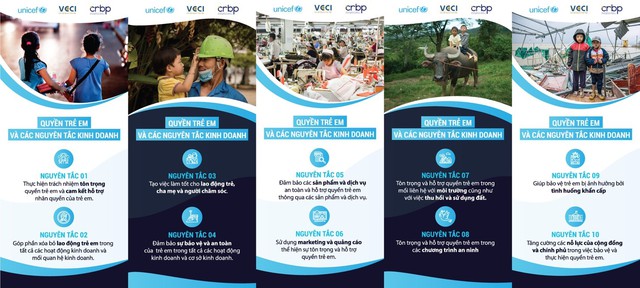
10 business principles for businesses to ensure and support child rights. Photo: UNICEF.
Thanks to these values, many textile and footwear companies are developing and have established their own reputation, contributing to the community and developing their production and business activities. Notably, respecting and promoting child rights also attract further investment into the company’s activities.
According to the VCCI and UNICEF report, although facing difficulties in terms of resources, lack of knowledge, skills, or insufficient support from the Government, community, and customers, small and medium enterprises stated that they are always ready to learn and improve.
Half of the surveyed enterprises said that they need support in both capacity building and financial support. However, when asked if businesses need support in improving capacity or financial resources, many businesses said they need capacity building and understanding of child rights. This shows the willingness of small and medium enterprises to learn in order to improve capacity, and serve to promote child rights in their business activities.
For businesses, regardless of scale, all activities will directly or indirectly impact children’s lives. This reality shows that it is time to focus seriously on the powerful impacts of business on children. Doing this well not only demonstrates the social responsibility of businesses but also promotes the business activities themselves.













